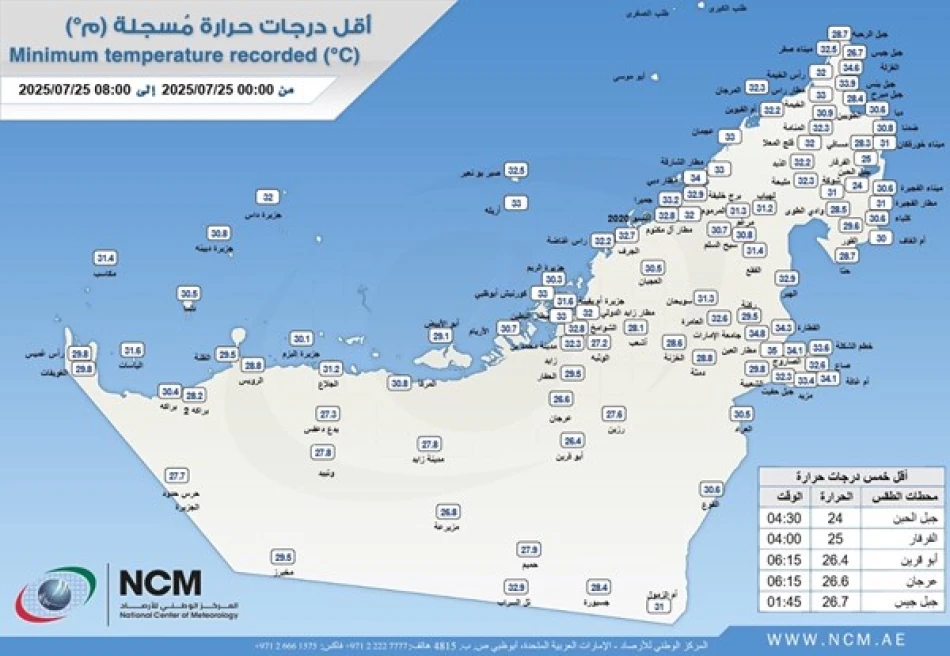
Icy Delight: Jabal Al Habun Records Lowest Temperature in the UAE
UAE Records Unusually High Winter Low of 24°C, Highlighting Regional Climate Patterns
The UAE's National Center of Meteorology recorded the country's lowest temperature at 24°C (75°F) this morning at Jabal Al-Haban in Fujairah at 4:30 AM local time, underscoring the nation's consistently warm climate even during winter months and reflecting broader regional weather patterns that distinguish the Gulf from traditional seasonal variations.
Geographic and Climatic Context
The temperature reading from Jabal Al-Haban, located in the mountainous Hajar range of Fujairah emirate, represents the coolest point across the UAE's diverse topography. Fujairah's eastern location along the Gulf of Oman typically experiences more moderate temperatures compared to the interior desert regions, making it a natural candidate for the country's daily temperature minimums.
The 24°C reading, while representing the day's lowest temperature, remains significantly warmer than winter conditions in most global regions. This highlights the UAE's position within the subtropical desert climate zone, where even winter months maintain temperatures that many countries would consider comfortable spring or autumn weather.
Regional Weather Patterns and Seasonal Variations
The Emirates' winter season, spanning roughly from December through February, typically sees daytime temperatures ranging from 20-30°C, with occasional drops into the high teens in mountainous areas. The consistency of the 24°C minimum temperature reflects the moderating influence of surrounding water bodies and the region's latitude.
Comparative Regional Analysis
This temperature pattern aligns with broader Gulf Cooperation Council climate trends, where countries like Qatar, Bahrain, and Kuwait experience similar winter minimums. However, the UAE's diverse topography—from coastal plains to mountain ranges—creates microclimates that can vary significantly within relatively short distances.
Implications for Energy and Economic Activity
The mild winter temperatures have substantial economic implications for the UAE's energy sector and tourism industry. Reduced heating demands during winter months help balance the country's energy consumption patterns, partially offsetting the intensive cooling requirements during summer months when temperatures regularly exceed 40°C.
For the tourism sector, these comfortable winter temperatures support the UAE's positioning as a winter destination for visitors from colder climates, contributing to the country's economic diversification efforts beyond oil revenues.
Climate Monitoring and Meteorological Infrastructure
The precise temperature recording demonstrates the UAE's investment in comprehensive meteorological monitoring systems across its varied terrain. The National Center of Meteorology operates an extensive network of weather stations that provide crucial data for aviation, maritime operations, and climate research in one of the world's most challenging environments.
This monitoring capability becomes increasingly important as the region faces long-term climate considerations, including rising average temperatures and changing precipitation patterns that could affect water resources and urban planning strategies.
Most Viewed News

 Layla Al Mansoori
Layla Al Mansoori






